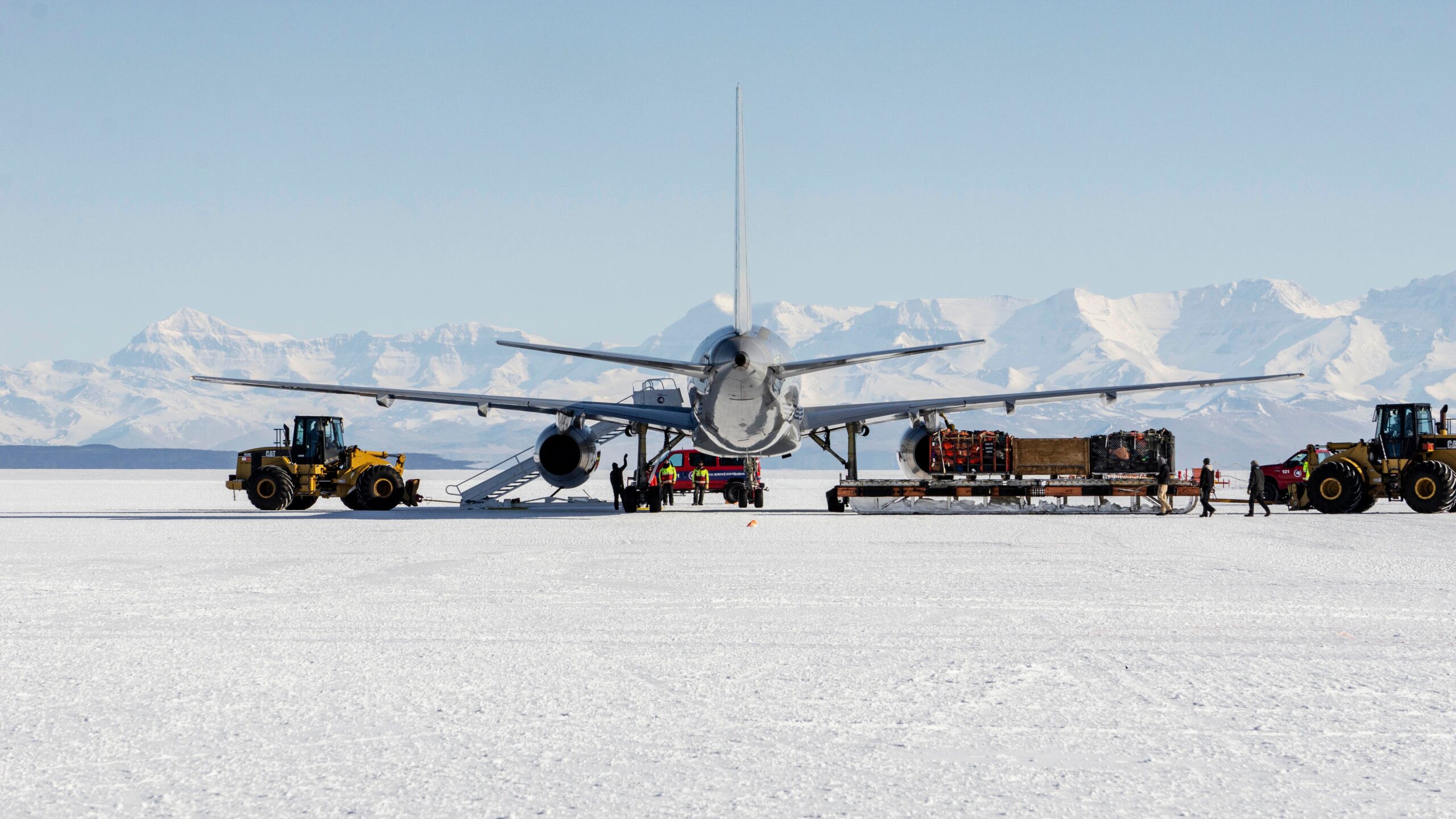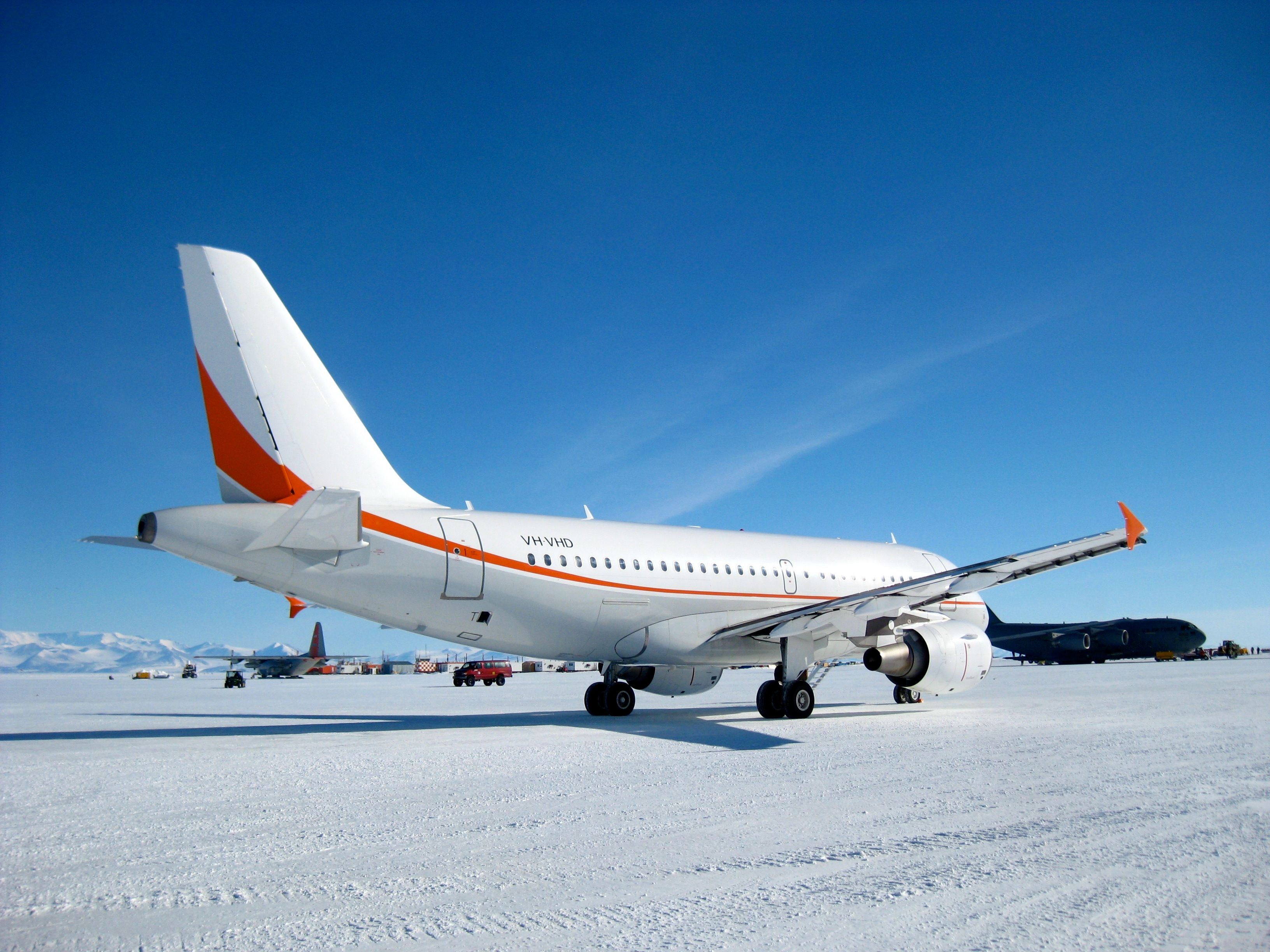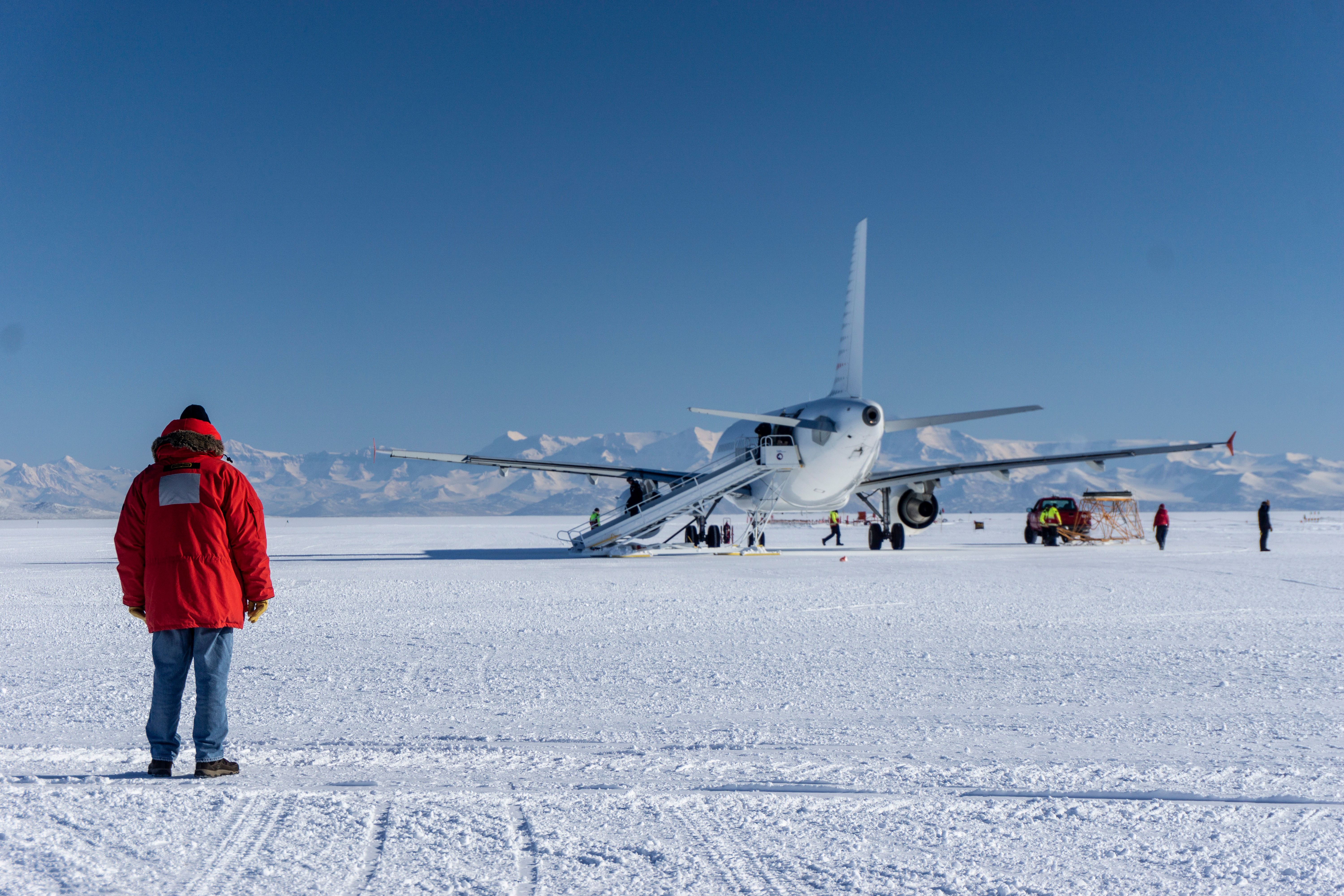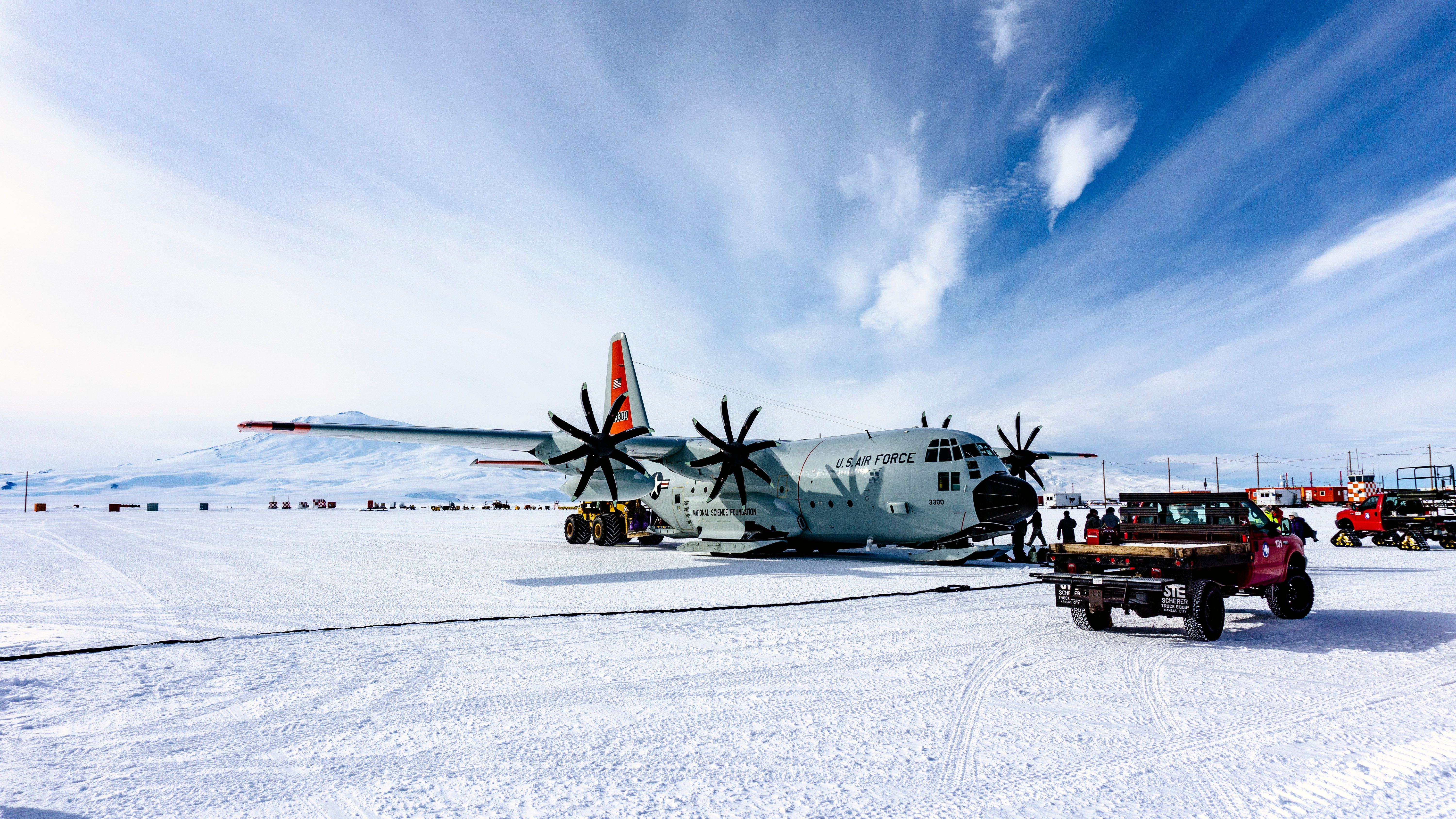Despite the sub-zero temperatures, Antarctica is steadily becoming a hot destination for avid adventurers looking for their next challenge, all without boasting a single paved runway. Due to various environmental and logistical challenges, Antarctica offers blue-ice runways, a nifty and unique solution for the over 100,000 researchers and thrill-seekers traveling south during the small windows of good weather between November and January.
Boosting connectivity
Whether you’re for or against increased human activity on the southerly continent, blue ice runways have undoubtedly added unprecedented connectivity, allowing for larger aircraft to land and resupply the mass of research stations dotted across the ice sheets.
Before the construction of runways, deliveries were exclusively made by ship during the three months of summer when the polar ice was less hazardous and posed fewer logistical challenges. Once deliveries were offloaded at coastal ports, supplies would be carried on to their destination by ground vehicles, or ski-equipped piston or turboprop aircraft, such as the De Havilland Canada Twin Otter.
Further issues were compounded by the limited range. Although Antarctica is protected under a 1959 treaty, up to 30 countries govern the region, while seven more countries hold territorial claims. The international and multicultural nature of the continent set the requirement for longer and longer-haul aircraft to reach it directly to provide medical assistance and launch rescue operations, as opposed to stopping to refuel at airports in Chile, Australia, or New Zealand.
The concept was first envisioned in the late 1950s as part of a United States Army engineering program called “Operation Deep Freeze.” It wasn’t until the 1970s that areas closer to the South Pole were surveyed for runways to accommodate wheeled aircraft from New Zealand and Chile.
Several suitable sites were proposed, but the project once again became dormant, later being picked up by adventure travel agency, the Adventure Network International (ANI), in the 1980s. ANI hired glaciologist Dr. Charles Swithinbank to head the project, with Swithinbank selecting a small patch of land near Patriot Hills.
Photo: Colin Harnish | Shutterstock
The first flight took place in November 1987 with the arrival of a four-prop Douglas DC-4. The construction of the icefield prompted the development of the adjacent Patriot Hills Base Camp and allowed for aircraft, including the DC-6, Lockheed C-130 Hercules, and Ilyushin Il-76, to land and resupply the area. In the years since, commercial operations have primarily shifted to the nearby Union Glacier Blue-Ice Runway (UGL), with Patriot Hills retained as an alternative airport.
Government and NGO operations are focused out of several fields, including Norway’s Troll Airfield serving Troll Research Base, 10,830 ft (3,300 m) runway capable of handling aircraft as large as the Boeing 767, Wilkins Runway, a hub for the Royal Australian Air Force and Australian Antarctic Division via Hobart International Airport (HBA), and the ex-Soviet Novo Air Strip at Novolazarevskaya Station, which also feeds India’s Maitri Friendship Research Centre.
About blue ice
With Antarctica’s sub-zero temperatures, the snow is drier than that found across North America and Europe. It has an extremely high reflectance of light, also known as albedo, causing the snow to appear bright white. As snow blindness can be a severe risk to aviators, inland icefields are selected thanks to their lower albedo content, with their darker appearance acting as a natural filter to absorb yellow and red light. Blue ice takes its name from its ability to reflect blue light well, leaving it with a blueish hue.
Unlike its concrete and other counterparts, where aircraft are able to use their brakes to slow down, aircraft landing on blue ice runways are required to use reverse thrusters to slow down, owing to the low efficiency of friction on the surface.
Photo: Colin Harnish | Shutterstock
Aircraft landing on blue ice runways require significantly longer runways to come to a complete stop, causing some runways on the continent to extend as long as those in busy Airbus A380 and Boeing 747 capable airports.
The runway is maintained with graders and snow-blowing equipment to clear and level the surface of the ice for incoming flights, preventing snow from blowing across and reducing the already limited grip. Thin grooves are also cut into the surface with rake-like plowing equipment, adding further grip for the engine wheels.
Speaking to Simple Flying back in 2020, former British Antarctic Survey employee Jason Finlay, brother of Journalist Mark Finlay, provided a unique insight into the experience. During his stint with the research institute during the 2010s, Finlay noted the extensive journey between London and Cape Town International Airport (CPT) before hopping onto one of the Russian-operated Ilyushin Il-76TD-90 cargo jets bound for Novo Airbase in Queen Maud Land.
According to Finlay, landing on ice is a somewhat nerve-wracking experience, combining the constant feeling of the aircraft spinning off the runway at any point with the extensive period required to come to a stop.
Upcoming operations
Following Australia’s decision to shelve a proposed 8,900 ft (2,700 m) runway in 2022, blue ice is set to remain the only feasible way to enter Antarctica for the time being. Though tourism numbers peaked in 2022, the industry remains heavily regulated and primarily cruise-based, so the need for greater capacity at its airports is low.
Current aircraft capable of traveling to the continent include the passenger Airbus A340, operated on a charter by Hi-Fly. The widebody aircraft, registered 9H-TQZ, has run two seasons on the continent, hopping between Cape Town and Wolf’s Fang Runway (WFR), a private blue ice airport owned by tour operator White Desert.
As the season heats up again, Norse Atlantic has recently become the first Boeing 787 Dreamliner blue ice operator. The charter service saw the carrier ferry Norwegian Polar Institute researchers between Norway and Troll Airfield.
The service was operated earlier this year by Czech budget airline Smartwings, which ran the first Boeing 737 MAX service to the airfield, returning researchers to Bremen Airport (BRE) and Oslo Gardermoen Airport (OSL) over a two-day period in January.
Are you one of the few lucky passengers who have touched down on one of Antarctica’s blue ice runways? What was your experience? Let us know in the comments.




